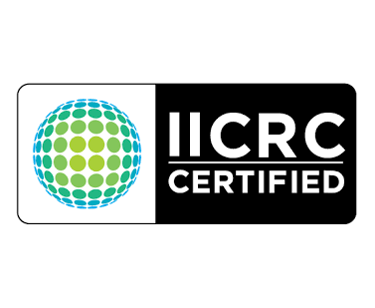We Work With All Insurances – No Hassle, No Delays, Just EXPERT WATER DAMAGE Restoration
Home Protection Tips for Reducing Humidity Damage


Have you ever walked into your basement or bathroom and caught a whiff of mustiness? That subtle damp smell isn’t just unpleasant; it’s a warning sign. Moisture is sneaky. It doesn’t always come from floods or broken pipes. Sometimes, it lingers in the form of high humidity, building up slowly until the effects become tough to ignore. While homeowners are usually quick to address visible water problems, excessive indoor humidity often goes unnoticed until serious damage sets in. Wood begins to warp, walls start to stain, and mold finds a new home, right under your nose. If you want to safeguard your home, keeping humidity in check needs to be a priority.
Why Humidity Becomes a Hidden Threat
Humidity is essentially water vapor in the air. When this invisible moisture reaches levels above forty to fifty percent, it creates an ideal environment for deterioration. Unlike water leaking from a pipe or invading through a flooded floor, this kind of moisture accumulates subtly. Your home can look perfectly dry, while behind the walls or under the floorboards, prolonged exposure to humidity is causing real damage. Think warped hardwood floors, peeling paint, swollen drywall, and yes, the ever-dreaded mold colonies stealthily expanding in dark corners.
Most homes are built to handle a reasonable amount of humidity. But when elements like poor ventilation, faulty HVAC systems, or everyday lifestyle habits come into play, humidity rises above safe levels without drawing attention. Your long steamy showers or lack of exhaust fans might be slowly assisting mold growth behind the bathroom wall. It’s a damaging combination of being out of sight and out of mind until it affects your health or your property value.
How Excess Moisture Damages Your Home
High humidity acts like slow-working acid for building materials and personal possessions. Wooden structures are especially sensitive. Floorboards and furniture may swell and warp, joints can loosen, and eventually, water-stressed wood begins rotting. Even metal fixtures are prone to corrosion when they constantly battle moisture-rich air.
Paint won’t fare much better. When walls absorb humidity, the results usually show up as blistering, bubbling, or peeling paint. Wallpaper can also detach from the walls, often indicating far worse issues just behind the surface. Plaster walls can lose their integrity, making future repairs more than just skin-deep.
Then there’s your indoor air quality. Along with weakened flooring and unsightly walls, excess humidity can lead to microbial growth. That includes mold, mildew, and dust mites, all of which feed off moisture in the air. Their presence isn’t just a nuisance. For those with allergies or respiratory issues, these particles turn your home into a hazard zone.
What Mold Really Needs to Grow
Most people assume flooding causes mold. While it’s true that large-scale water damage can invite fast growth, mold doesn’t need standing water. What it really wants is prolonged humidity and organic surfaces, drywall, carpet backing, insulation, or even clothing.
If you’ve got relative humidity above fifty percent, especially in places like basements, attics, or laundry rooms, you’ve created the perfect setting. Add in poor airflow or water vapor that never properly escapes after cooking or showering, and you’re giving mold an open invitation.
Once present, it spreads fast. Mold reproduces via airborne spores that settle on damp surfaces and colonize quickly. These spots can be black, grey, green, or even white. Beyond being visually uninviting, their mycotoxins affect indoor air quality, triggering everything from mild irritation to more serious respiratory stress. If you want true mold prevention, drying out those damp environments is step one.
Common Signs Your Home Has a Humidity Issue
There are indicators, both subtle and obvious, that your home moisture is out of balance. Musty smells are often the first sign. Then there are water stains on ceilings or upper corners of walls, often confused with roof leaks. Condensation on windows also points to high humidity, those foggy panes mean water is building up between interior and exterior environments.
Peeling paint in bathrooms and laundry areas, wood floors that feel slightly cupped, and even minor warping of cabinet doors can all mean excess dampness is present. You might also notice clothing in closets feeling clammy or linens smelling just a bit off, as though they haven’t been fully dried. All these add up to the same message: your home needs better moisture control.
How Ventilation Affects Indoor Moisture
Proper airflow plays a central role in managing humidity inside your home. Without movement, moist air collects and hangs in stagnant pockets, particularly in rooms like basements, kitchens, and bathrooms. When homes are airtight, which is actually great for energy efficiency, that trapped humidity doesn’t have many places to go.
Venting becomes your greatest defense. Bathroom fans, kitchen hoods, attic vents, and even properly spaced-out furniture can go a long way in dispersing built-up moisture throughout the house. Window screens and gaps left under doors help facilitate passive airflow for homes without mechanical systems. Your HVAC should also do more than just heat or cool. If it’s in good shape, it should move air effectively and filter out humidity as well. If it isn’t, you may be passing up a key tool in the fight against damp air.
The Role of Dehumidifiers in Home Health
If you’ve tried everything from fans to open windows, yet your air still feels sticky or heavy, it might be time to call in the Chrome Water Damage Experts. A dehumidifier works by pulling moisture out of the air and collecting that water so it can be discarded. It’s especially useful in areas with limited ventilation or homes in naturally humid climates.
Some models run continuously, others come with timers or humidity sensors to power on only when needed. Either way, they help dry the air, keeping your interior more comfortable while protecting materials from humidity-induced decay. Use them in basements, crawl spaces, laundry areas, or even on the second floor of older homes that seem harder to cool properly. In the long run, this single appliance can save you thousands in avoided restoration costs.
Humidity’s Impact on Insulation and Energy
Most people only think of insulation in terms of keeping warm or cool. But insulation that absorbs too much moisture stops working effectively. Waterlogged materials like fiberglass lose their air-trapping usefulness. Instead of acting as a thermal barrier, they conduct heat or cold, which spikes your energy bills.
In crawl spaces, attics, behind walls, or inside floors, humid air can change the performance of your structure without a single drop of water being visible. That moisture-laden insulation not only stops serving its purpose, it also becomes a growth platform for mold and mildew.
This is another reason ventilation matters: dry insulation performs better, makes your HVAC’s job easier, and keeps energy costs steady year-round. Let it hold moisture, and everything from temperature to air quality begins to shift in the wrong direction.
How to Prevent Moisture Buildup Indoors
Dry indoor air starts with building awareness. Make it a habit to check spots like closets, behind furniture, or under sinks each season. Run bathroom fans for twenty minutes after showers. Use exhaust fans whenever you cook. If there are rooms where the humidity in the air grows still and corners look a bit off-colored, consider placing a small dehumidifier there. Even using moisture-absorbing packets or containers with activated charcoal can reduce short-term dampness in smaller spaces.
Your home’s exterior also plays a role. Check for broken gutters or improper grading. Water should move away from the house, not pool against the foundation. Downspouts should also direct water far from crawl spaces and basement walls. Keeping everything on the outside functioning helps you maintain better control on the inside.
When Professional Help Becomes Necessary
If humidity issues remain persistent, it might be time to consult the Chrome Water Damage Experts. Zones like basements often need a full moisture assessment to catch the full extent of embedded dampness. Infrared cameras and moisture readers can detect issues invisible to the naked eye. From there, you can determine if sealing cracks, installing vapor barriers, or upgrading ventilation will solve the issue.
Mold remediation teams can also step in if microbial growth has established itself inside drywall, behind tiles, or inside insulation. Addressing it quickly not only protects your belongings but can significantly improve the well-being of those living in the home. Chronic allergens should not be ignored, especially when mold spores or dust mites are involved.
Getting Ahead of Future Humidity Problems
Most homeowners never think about moisture until it becomes a problem. The best approach is staying proactive. Watch how your home responds through different seasons. Spring and summer often bring higher air moisture, while closed-up winter homes lock in humid air after activities like cooking or running the dryer.
Once you start paying attention, delayed damage becomes avoidable. Air feels lighter, wood stays straight, and the air in your closets won’t leave your clothes smelling like an antique store. Your home doesn’t just look better, it functions better. As a restoration expert who’s seen the damage humidity can quietly cause, I can promise you this: tackling it before it turns visible will always be the cheaper, healthier, and smarter choice.
Chrome Water Damage Experts
Expert water damage restoration for your home or business.
© 2025. All rights reserved.


services


About Us








